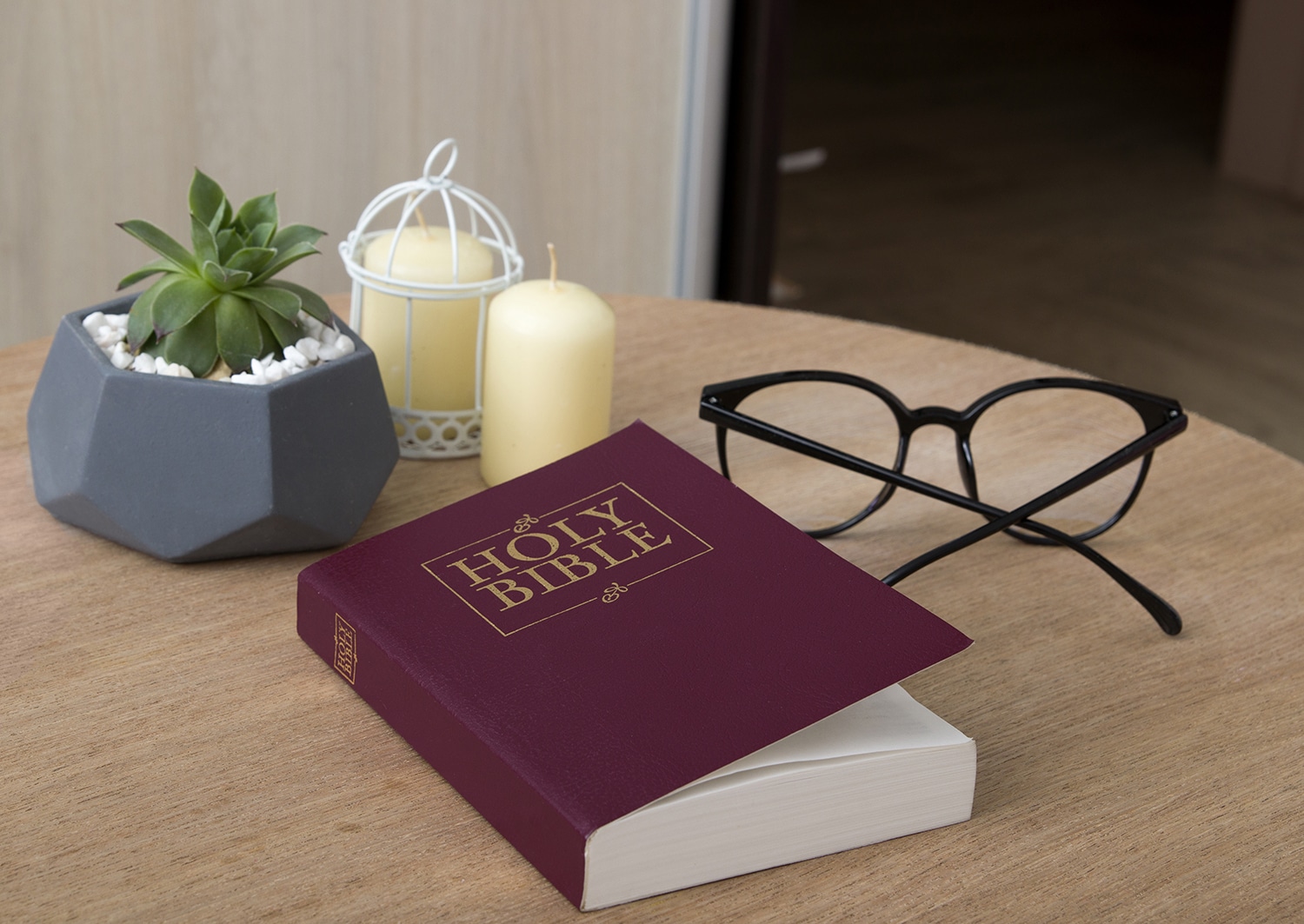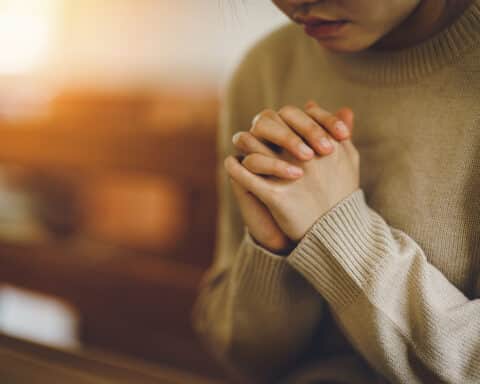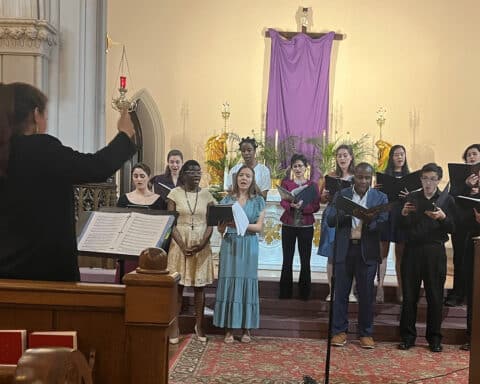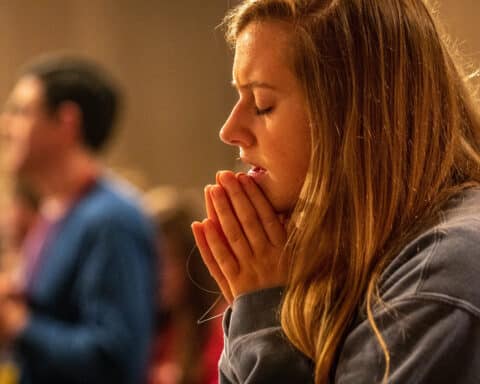Let’s talk about prayer. Let’s talk about how January is a wonderful time to start or restart a habit of daily prayer.
But first, let’s talk about winter.
I’m not a big fan of this time of year. There are plenty of unpleasant things about the winter months where I live: The way the coldness makes you cold, the way the darkness is so dark, and the way the dark and the cold make you kind of stupid.
But the thing that really hurts is how all the green goes away. You look outside, and everything is gray and white and brown, and it’s just sad. I need green! This is why, of course, people have houseplants. Nothing livens up a living space like living things. It’s the obvious solution to my green starvation, right?
Not so fast. I’m an absolute plant assassin. I love having plants around, but I’m terrible at keeping them alive. If plants were people, I’d be on an FBI watch list for the sheer number of suspicious disappearances associated with me.
Take, for example, my little fig tree. I had put it outside on the patio over the summer, but then a frost came and I forgot to bring it in. The poor thing turned brown, all the leaves fell off, and it went from a luxurious, broad-leafed beauty to a dry stick in a pot. I was so sad.
A reformed plant assassin learns to pray
But I’m telling you about it because I realized that I’ve actually learned a thing or two in the last several years — and what I’ve learned dovetails very nicely with what I’ve learned about prayer. Just as I suffer when there is no green outside, so too do I suffer when I don’t have a naturally flourishing relationship with God; and just as the solution to green starvation is having houseplants, the solution to spiritual starvation is prayer.
And if this metaphor doesn’t quite work out perfectly, just assume it’s because it’s dark and cold and I’m stupid. Not my fault!
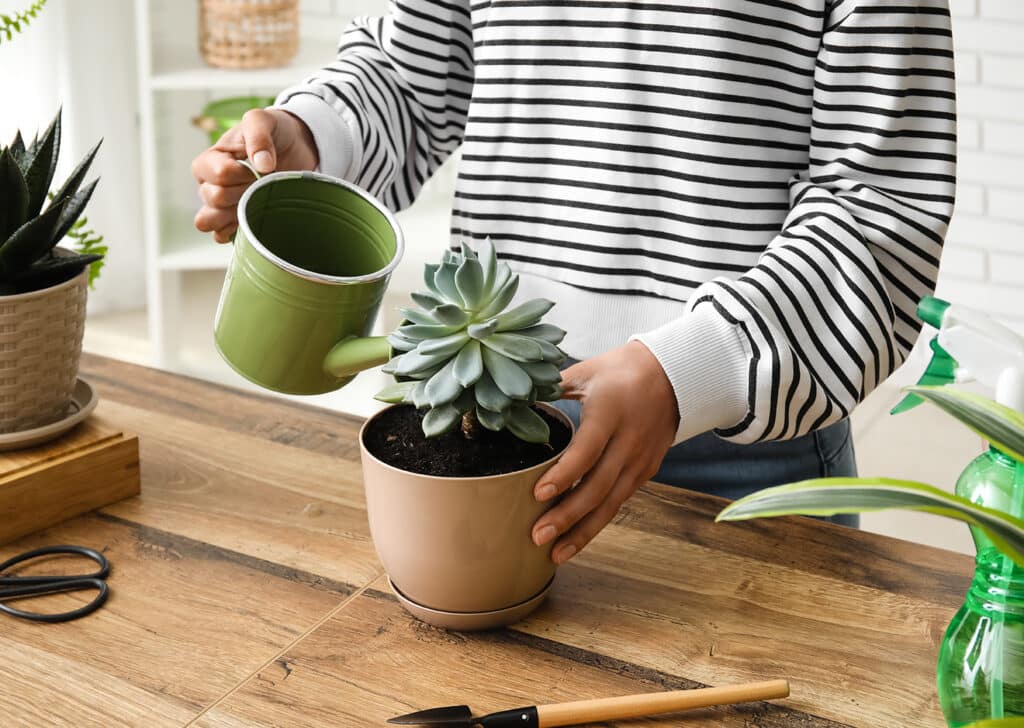
Don’t let your prayer life ‘dry out’
I am the queen of letting plants dry out in between waterings. Then, when I finally do remember to do it, the soil has become so parched that the water goes straight through it and runs out the bottom. Depending on the plant, you can fix this by either flooding it with water from the top down, or putting it in a second pot of water and letting it absorb it from the roots, or you can give it little sips of water very frequently until it softens up and is ready to accept more.
But the point is: There are consequences to letting it get that dry. If you neglect it for long enough, you can’t expect to just leap back in and pick up where you left off. The same is true with prayer. If you’ve been out of touch for a long time, you might be able to reestablish contact by flooding God with your passionate prayers; or maybe you need to sit and quietly meditate for a long time; or maybe you need to start small with short, frequent prayers until your soul softens up and feels ready for more. But there will be a period of adjustment.
Stick with the basics
That being the case, stick with the basics. There are plants that simply won’t put up with the kind of maltreatment I dish out, and they really do need expert care and devotion. I’m thinking of orchids or gardenias; and I’m thinking of complex ascetic or penitential practices or ambitious spiritual regimens. There’s a reason people like pothos, monstera and snake plants, and there’s a reason people like the Rosary or grace before meals or the Angelus or the mercy chaplet. They’re basic and achievable and it’s really pretty easy to keep them going. A living plant that’s commonplace is better than something that’s fancy and dead! So don’t get ahead of yourself. Do what you can do, not what you can’t.
I will confess that I’ve killed more “easy” plants than I’d like to admit. Yes, it’s super easy to grab a cup, fill it with water, and give your pothos a drink; but somehow a few days go by, a week goes by, a month goes by, and oops, it’s been three months since my last confession.
Be honest about your strengths and weaknesses
I will, however, remember to water my plants if I keep a milk jug of water near the plants. It’s dumb, but it makes a huge difference: If it’s incredibly convenient, I’ll actually do it; if it takes even a tiny bit of effort, I may not.
You’ll never guess: It’s the same with prayer. You have to be honest about your own weaknesses and your own routine. I know I spend way too much time on my phone, so I made a rule that I can’t turn the dang thing on until I’ve made my morning offering. I know I’d just as soon skip saying a “Hail Mary” when an ambulance goes by, so I’ve asked my kids to be in charge of reminding everyone in the car to do it, and boy do they remember. If you forget to pray, sign up for one of the thousands of available apps to remind you, or just put it on your daily calendar, or get an accountability partner.
The principle is: Think about how your day actually goes, and set little prayer traps for yourself based on your actual habits, rather than your ambitions. Know yourself, and make it easy on the person you are, rather than trying to do something that will require an overhaul of your entire psyche.
Find out where you spiritually thrive
Another revelation: It matters where plants are. I’d like to just stick them wherever they look pretty; but the truth is, they don’t do well if they’re in the wrong spot. Their surroundings matter, and sometimes they make the difference between life and death.
So ask yourself: Where do you park yourself, spiritually? Are your surroundings such that they encourage growth and health? There’s probably some conditions beyond your control, but also some things you can control. You can make choices about what kind of conversations fill your day, what kind of media you consume, what kinds of images you put in front of your eyes, what you hang on your walls. Your surroundings matter. Some lead to flourishing, some are deadly.
Keep trying and, if you fail, start over
My other secret of having a house full of plants is that I have no shame. If I kill a plant, I will just go out and buy a new one, because the goal is not to be someone who never fails; the goal is to be someone who has a plant. Obviously, if I keep doing the same dumb thing over and over and over again, it’s smart to reassess my habits and see what I can change; but at the same time, this is the kind of situation where sometimes progress just looks like letting yourself start over.
And you can always do this with God. Always, always, always. You can start over. You can go to him and say, “I’m sorry I failed. I would like to try again, please” and he will green you right up.
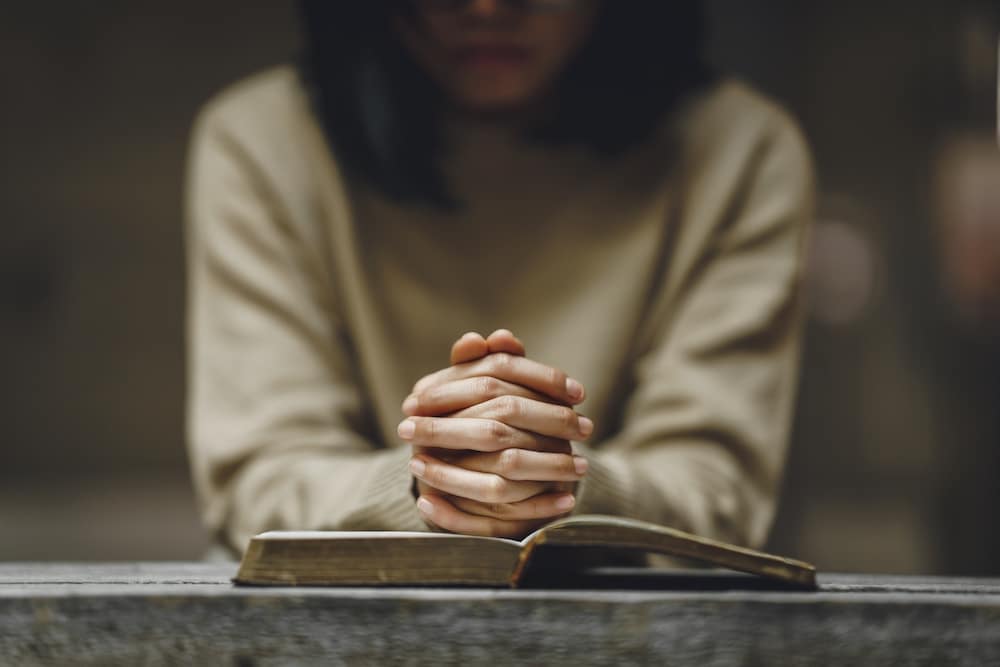
Which reminds me of that dead fig tree.
I liked it so much, and was so sorry I had killed it, that I didn’t just chuck it out, even though it was completely withered and black. I kept watering it and letting it get some sunlight and warm air, and after a week or two, lo and behold! It wasn’t dead after all. It wasn’t in great shape, but it was very willing to make an effort. So I kept caring for it, and there are now eight little tender baby leaves budding out of the dry stem, and it is a delight to see.
A relationship with God is harder to really kill than you think. Even if it feels like it’s dead and dry, withered and black and beyond all hope, keep coming back to it and making an effort. Keep watering it (or begging for water, depending on who the plant is, in this analogy.) Keep praying. In God’s mercy, he made the human soul extremely resilient, truly destined to come back to life.
And you know, this potted plant life is not all we’re destined for. Life on earth is a long winter, with only little bits of green to console us. What we have to look forward to is a great living garden with flowing water and endless light, where everything that surrounds us makes us flourish. This is our destiny, if we stay close to God.

